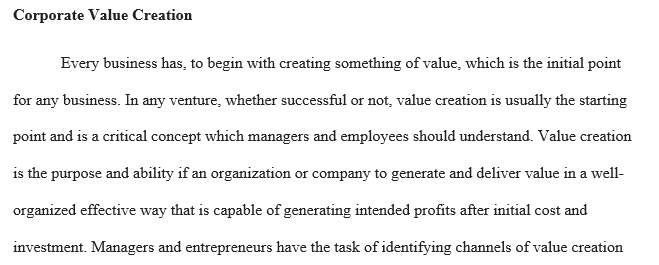HRM 522 Case 4
Workplace Relations, Value Creation, and the Future
Assignment Overview
We will conclude this course by looking at the contributions HRM might make to creating value for private-sector organizations and how employee relations and/or union relations fits into that process.
Begin by reviewing the following:
Exploring ways to improve labor-management relations and collective bargaining. (Summer 2007). IR Concepts. Retrieved from http://www.ircounselors.org/downloads/irconcepts-0…
Value-adding and survival tactics for HR professionals. (2009). HR Focus, 86(1), S1-S2. Retrieved from ProQuest.
Pamela, C. K., & Low, J. (2001). The value creation index: Quantifying intangible value. Strategy & Leadership, 29(5), 9-15. Retrieved from ProQuest.
Sanborn, M. (2001). Crash course in value creation. Executive Excellence, 18(11), 14. Retrieved from ProQuest.
Schiuma, G., & Jarrar, Y. (2004). Benchmarking knowledge for value creation. Benchmarking, 11(6), 555-558. Retrieved from ProQuest.
Case Assignment
You are a professional in HRM and have been asked to give a presentation to a group of 20 experienced HR professionals in your community. You work for a print design shop so you would like to have a handout that is visually appealing as well as informative. You want to go well beyond the standard blurbs of information found on the usual PowerPoint slides.
Using Word, PowerPoint, or Excel, design an eye-popping handout that covers the following topics:
“Value creation” as it applies to workplace relations in the private sector.
Key factors you and the above authors think will play in the future of workplace relations in unionized and union-free private-sector workplaces.
Bring in at least 3 library sources to help strengthen your handout.
Please upload your training handout by the Module due date. Handout length: 4 pages.
Assignment Expectations
Demonstrate critical thinking and analysis of the relevant issues and HRM actions, drawing on your background reading and research.
Information Literacy: Evaluate resources and select only library/web-based resources that provide reliable, substantiated information.
Give authors credit for their work. Cite sources of borrowed information in the body of your text as footnotes or numbered end notes, or use APA style of referencing.
Prepare a paper that is professionally presented (including a cover page, a list of references, headings/subheadings, and a strong introduction and conclusion). Proofread carefully for grammar, spelling, and word-usage errors.
Visit Trident’s Student Guide to Writing a High-Quality Academic Paper for instruction on writing papers, citing sources, proper referencing, and so forth.
1410 Words
APA
